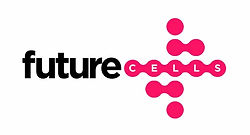Whats the difference between cord blood and cord tissue banking


Cord Blood Banking
Cord Tissue Banking
Cord blood stem cells can presently treat over 85 different conditions including leukaemia, thalassemia and anaemia.
The future treatment possibilities of cells found in cord tissue are ever growing and are currently in over 300 clinical trials.

Dental Pulp Banking
Milk teeth and healthy adult teeth give you the opportunity to bank valuable cells at multiple stages in life.

"Store your future under our pillow"
Adult teeth can be as much useful as milky teeth ,,, read more about tooth cells banking
What is Cord Blood Banking ?
Umbilical cord blood contains unique stem cells called haematopoietic stem cells; HSCs. These specialised cells can reproduce into the types of cells found in the blood. This means they can treat life-threatening blood diseases like leukaemia’s, anaemia’s and thalassemia’s. To date there are more than 85 different diseases that can be treated with HSC’s from umbilical cord blood.
As the HSC’s found in cord blood are particularly naive due to being essentially left over after the birth of your baby, this makes them highly desirable for use in stem cell transplantation as they can be transplanted with less adverse effects than other forms of stem cell treatment. They also offer a higher chance of a match to family members than cells obtained from other sources.
Collecting and storing these stem cells for your child is a once in a lifetime opportunity that is risk free, the cells are only collected after your baby is born and the umbilical cord has been cut. This ensures nothing about this procedure is dangerous for you or your baby.
Future Health Biobank has released cord blood samples for treatment in the USA, Europe and the Middle East. These samples have been used to treat conditions such as Fanconi’s Anaemia, Severe Combined Immunodeficiency (SCID) and Beta Thalassemia.
What is Cord Tissue Banking
Cord tissue is known to be a rich source of Mesenchymal stem cells (MSCs).
Today there are around 300 ongoing clinical trials globally using MSCs to treat such condition as autism, cerebral palsy and diabetes.
we will store for you multiple samples of cord tissue in separate cryogenic storage containers. These samples are frozen, ensuring that the whole tissue is available for use once treatments are available.
In addition, we will store an additional sample of cord tissue for quality control purposes. This sample is thawed, the cells extracted from the tissue and cultured. This is to ensure that we only store samples that contain viable (live) cells with the proliferation capability (ability to divide) required, to ensure they will potentially be suitable for use in treatments as and when they become available.
The processes used by us to store cord tissue have been shown to result in the banking of live cells. we are currently undertaking further validation studies to prove that the cord tissue samples stored do contain MSCs which retain their ability to differentiate into different tissue types including bone, cartilage and fat after the samples have been frozen.
Help and advice
FAQ'S
What conditions can stem cells presently treat?
Success story: Laith's cord blood transplant
